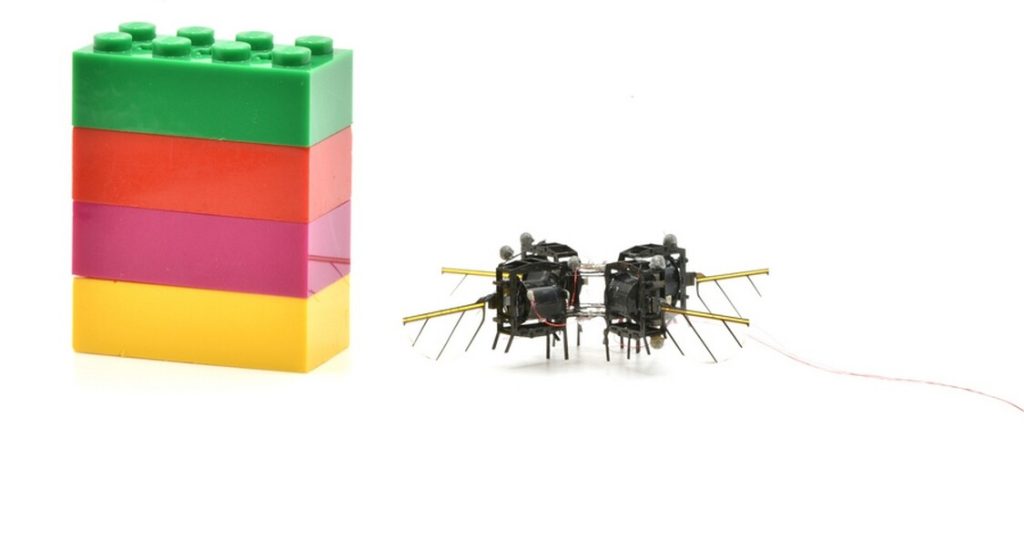
In 2021, researchers at the Massachusetts Institute of Technology (MIT) tried to build a robot pollinator based on the anatomy of bees.
Bees’ flight capabilities are quite sophisticated, but strangely, the MIT roboticists ended up building a robot that sported 8 wings and 4 bodies.
Now, a new design, closer to nature’s own model, is proving substantially superior. Capable of 17 minutes of flight time, the new robotic bee is 100-times more efficient.
Demonstrated in a paper published recently in Science Robotics, the scientists suggest that an artificial hive of these robobugs could give bees a break and pollinate plants kept in vertical indoor farms with fluorescent lighting; a very difficult environment for bees.
Additionally they could be used in more harmful environments such as space, or areas contaminated with radiation.
“The amount of flight we demonstrated in this paper is probably longer than the entire amount of flight our field has been able to accumulate with these robotic insects. With the improved lifespan and precision of this robot, we are getting closer to some very exciting applications, like assisted pollination,” says Kevin Chen, an associate professor in the Department of Electrical Engineering and Computer Science (EECS), head of the Soft and Micro Robotics Laboratory.
Part of the flight success was down to splitting the 4 bodies down to just 2
“In our old design, the performance of each individual unit was always better than the assembled robot,” Chen told MIT press.
Whereas 8 wings generated counterforces that slowed the bee robot down, 4 has proven much better, and the new model can even perform aerial flips. Each wing is connected to a mechanical set of muscles called actuators.
ALSO CHECK OUT: This Soft Robot Needs Only Physics and Air to Spontaneously Sync and Scoot at Top Speeds
These are formed from small layers of elastomer stuck between two very thin carbon nanotube electrodes. The actuators rapidly compress and elongate, generating mechanical force that flaps the wings.
A longer hinge—the greatest challenge in building the new model, reduced the torsional stress experienced during the flapping-wing motion.
MORE MICROROBOTS: Tiny Robots Can Help Fix Leaky Old Water Pipes Without Having to Dig Up Roads
“Compared to the old robot, we can now generate control torque three times larger than before, which is why we can do very sophisticated and very accurate path-finding flights,” Chen says.
Moving forward, they want to push the design to the limit of its performance, with a target of 10-times longer flights, as well as precise, controlled take-off and landing maneuvers that could be done from the center of a flower.
SHARE This Mechanical Hazmat Bee With Your Friends…

